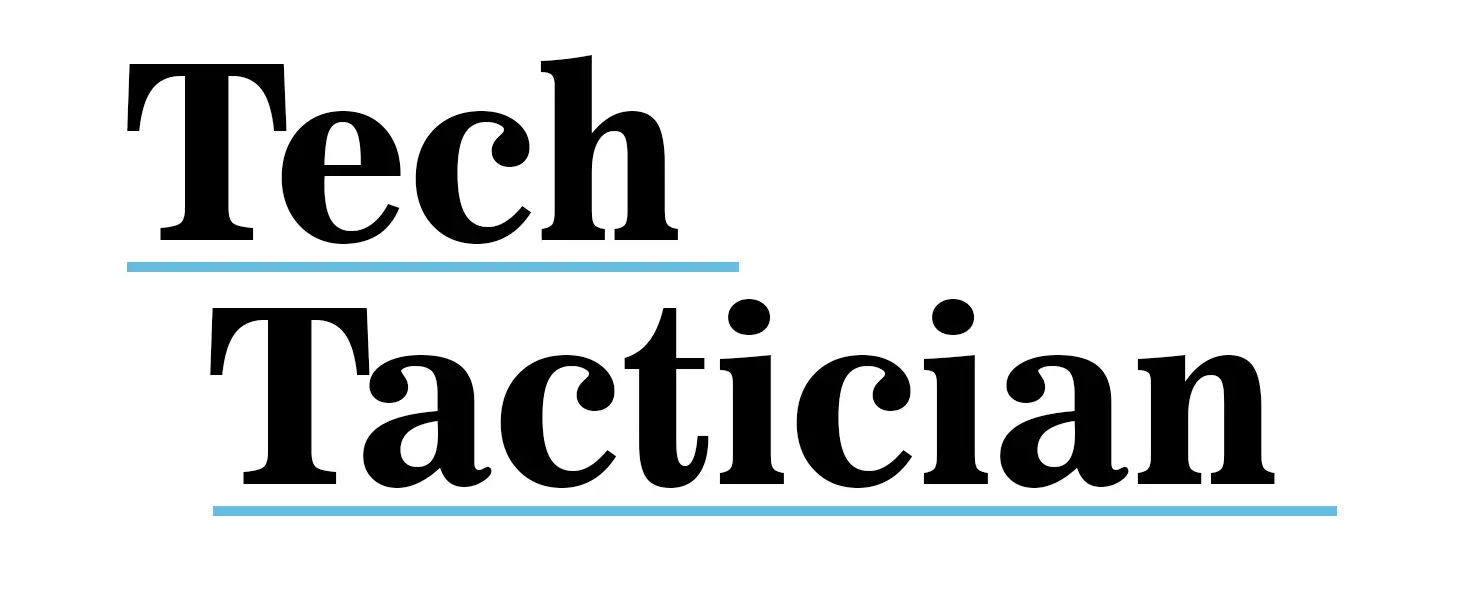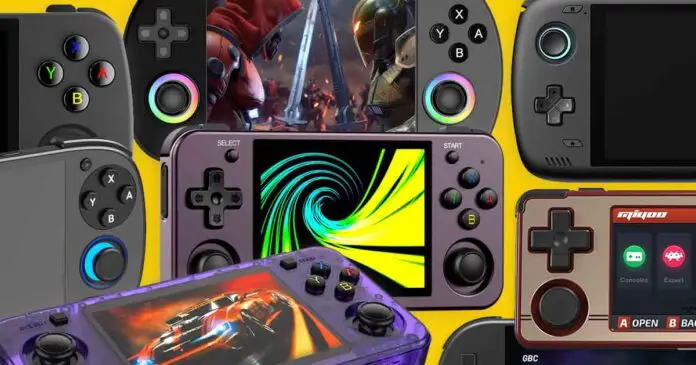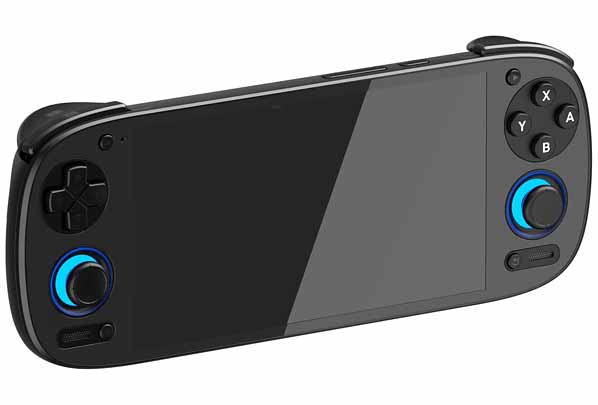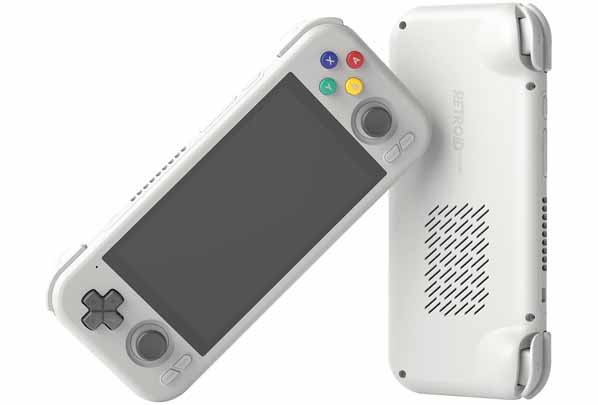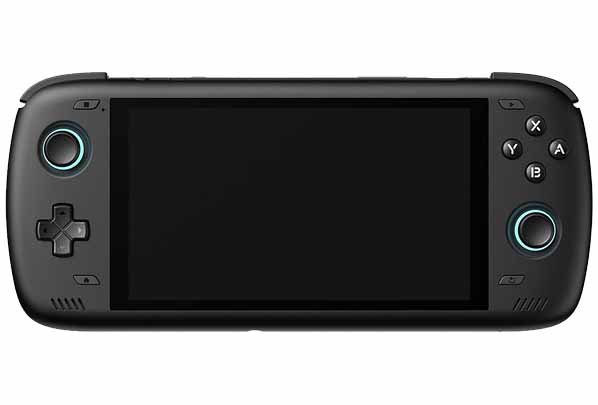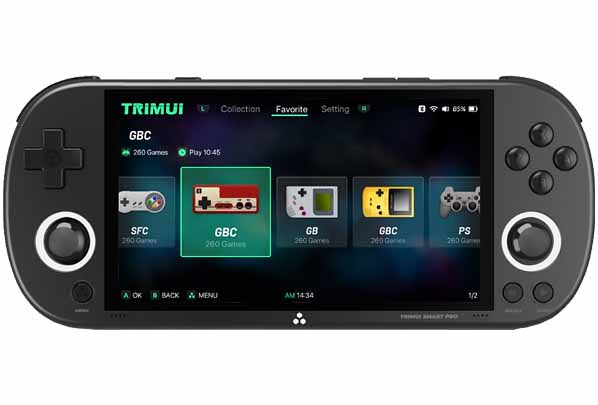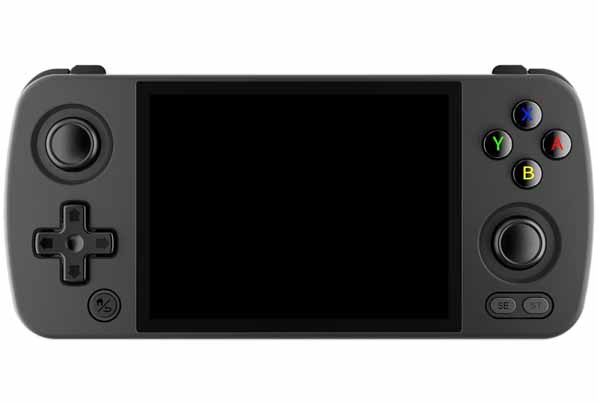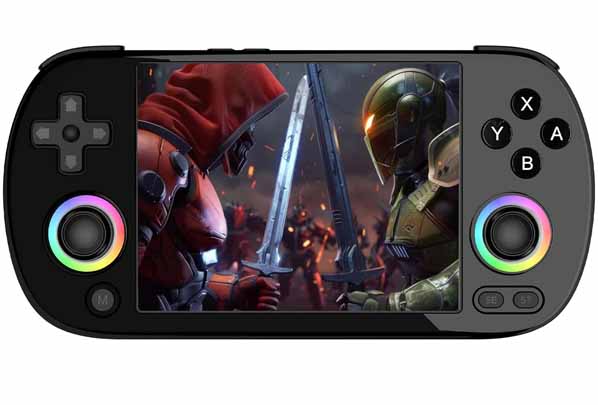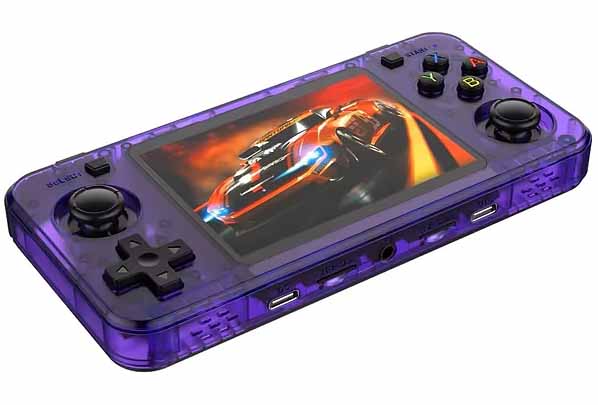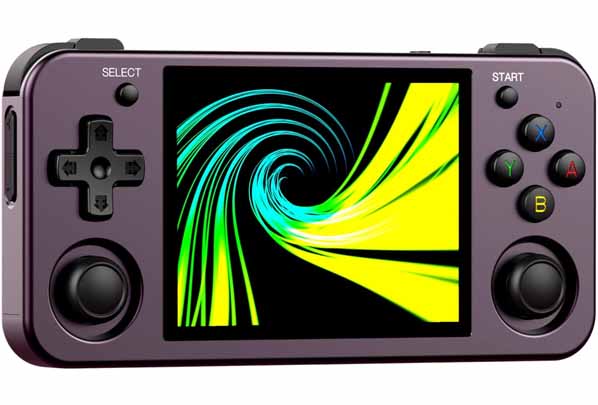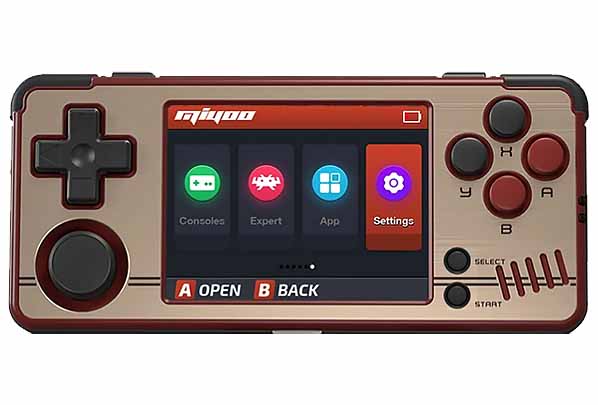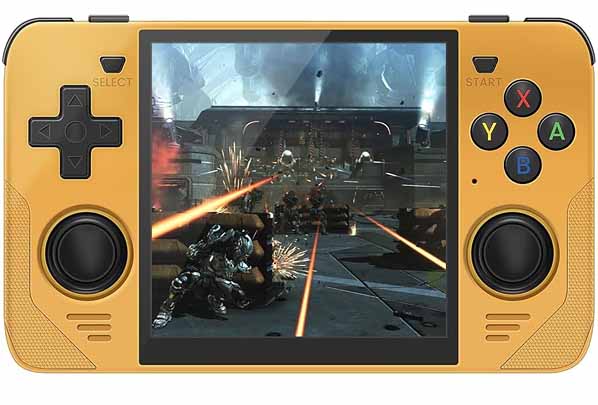Having already covered the best pocket emulators of the year, I thought it was time to give the newest popular horizontal handhelds the same kind of attention with this new comprehensive buyer’s guide. Here’s a list of the best pocket emulators with 4:3 and 16:9 display aspect ratios released in this and the previous year!
If you want to see my main list of the latest best performing retro handhelds, you can find it here: 10 Best Retro Handheld Emulator Consoles This Year – My Personal Picks!
This web portal is reader-supported, and is a part of the AliExpress Partner Program, Amazon Services LLC Associates Program and the eBay Partner Network. When you buy using links on our site, we may earn an affiliate commission!
Budget Considerations, and What To Expect
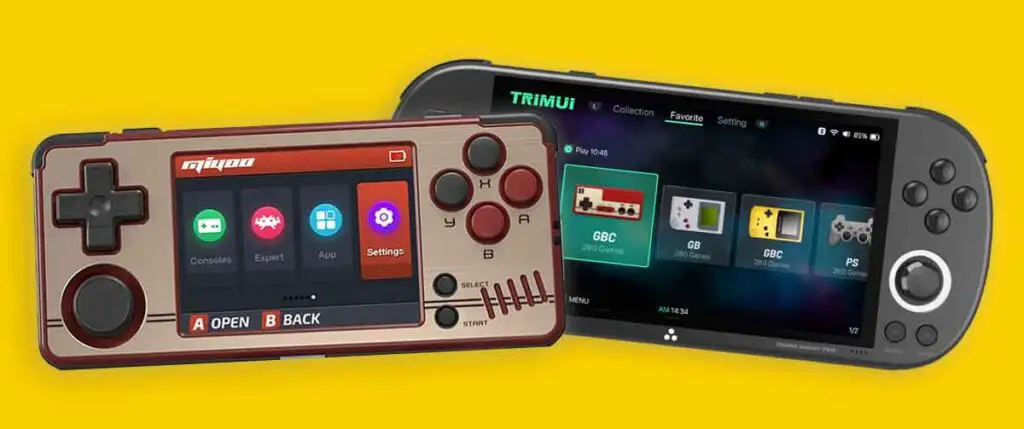
Retro handheld prices now generally span everything from sub $60 basic emulator consoles to pocket emulators way exceeding the $100 mark. In most cases, the difference in price comes with a noticeable difference in build quality and performance.
The more expensive devices tend to be able to emulate systems above the PS1/N64 era, which is the most common performance cutoff point for the more “budget” retro handhelds.
The less expensive pocket emulators will generally offer you nearly flawless performance when it comes to the 8-bit/16-bit console era, as well as great PS1 performance, but very little beyond that. While often cheaper systems such as the Miyoo Mini A30 can play less graphically advanced PSP/N64/Dreamcast games with playable framerates, anything above that is the domain of the systems from the higher price point.
The most sophisticated devices will easily crack into the GameCube, PS2, and Wii/Switch v1 territory with many if not most games running at near full speed, and if you want the most powerful dedicated retro handheld console, this is the area you should be aiming for.
Newer and more expensive handhelds such as the Retroid Pocket 4/5 or the AYN Odin 2 are among the top contenders both when it comes to the wide range of systems they can emulate and their performance when emulating the modern consoles mentioned above.
The best rule of thumb here is to decide which games you want to play and then shop one tier higher so you’re not stuck tweaking your emulator software settings for hours on end.
Horizontal vs. Vertical “Game-Boy Style” Handhelds
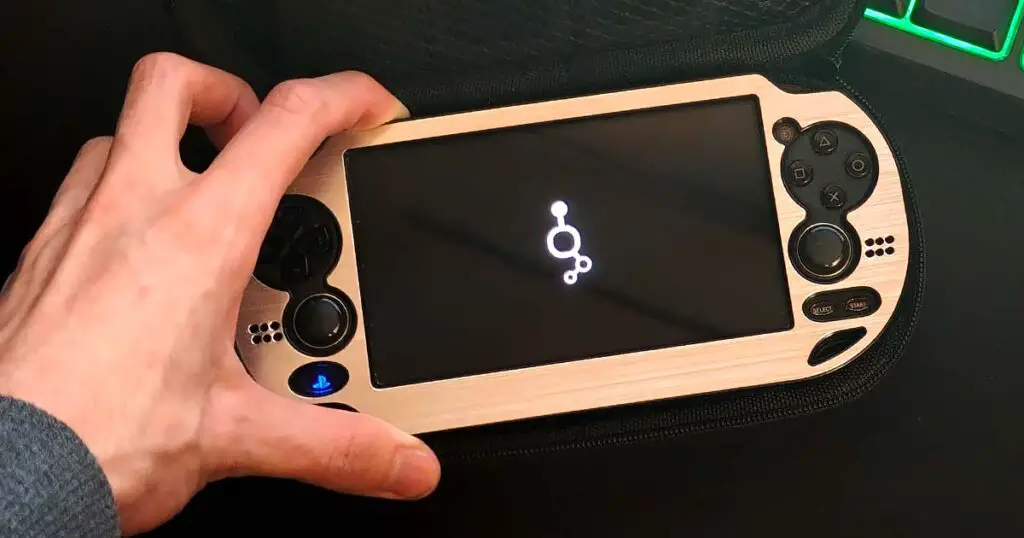
Horizontal handhelds have a few commonly mentioned advantages over the classic Game Boy style vertical consoles. They grant you proper full-size shoulder buttons, wider hand grips (usually profiled), and more room for analog sticks, which is very important if you want to emulate any newer systems released after 2000.
Check out also: Buying a Used PS Vita for Homebrew – What You Need To Know
Vertical models often win on pure pocketability factor and nostalgic charm, but they can also be simply too small for some, especially so for people with larger hands. To answer that, some vertical devices, such as the Miyoo Mini which I have recently reviewed, come in two form factors – smaller (the Miyoo Mini), and larger (the Miyoo Mini Plus).
You can see a similar list but both for horizontal and vertical devices here: 10 Best Retro Handheld Emulator Consoles This Year – My Personal Picks
I wouldn’t be myself if I didn’t mention the fact that aside from the models on this list, a modded PS Vita is also a great option for horizontal retro gaming, especially if you care about running native PSP/PSV titles natively. In fact, it’s probably one of the best solutions when it comes to sheer build quality and general user experience for game emulation excluding the PS2/PS3/Xbox game titles.
Smartphone Emulation & Horizontal Detachable Controllers
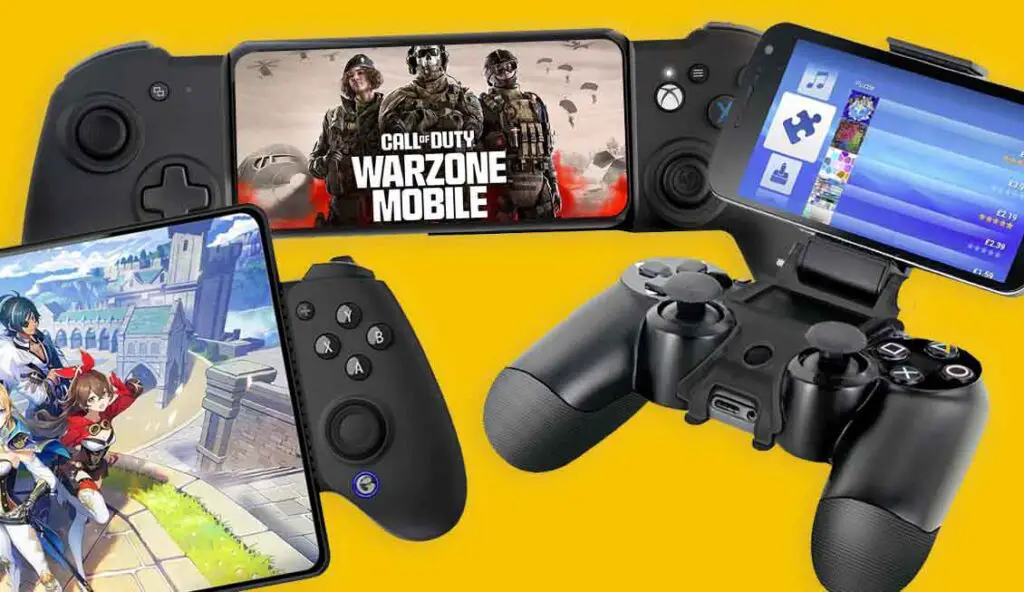
A modern high-end smartphone paired with a backbone-style horizontal controller like this can easily outperform most handhelds you can see below—provided you don’t mind not having a dedicated device for your retro gaming sessions, and some extra battery drain.
While pocket emulators can easily outperform any phone-attached wireless controller in terms of integrated controls, game-pad latency and single-purpose focus, I felt like mentioning this rather popular alternative to having a portable emulator handheld was important here.
With that out of the way, let’s get to our list!
10 Best Horizontal Retro Handhelds, 16:9 and 4:3 Models – The List
16:9 Aspect Ratio
1. Retroid Pocket 5 (16:9)
- Fantastic performance – comfortably runs anything up to PS2 and even most of the original Switch titles.
- Large, quality 5.5-inch OLED display (1080p).
- Hall-effect analog sticks and analog triggers.
- 3.5mm audio jack on board.
- Large 5000mAh battery.
- Not very pocket-friendly due to its larger size and weight.
- Active cooling means at least some background fan noise.
- Pretty high price point compared to the other handhelds on the list.
Retroid Pocket 5 features a 5.5-inch 1080p OLED display, hall-effect analog sticks, analog triggers, and a solid 5000 mAh battery, which alongside the Snapdragon 865 chipset which lies at its heart put it in the premium territory of Android-based retro emulator handhelds. The size of the device is comparable to the Switch Lite (just like in the case of the Retroid Pocket 4 Pro), and the addition of grips on the back is a nice touch too.
When it comes to performance, as expected of a device in this price range you will be able to enjoy full-speed N64, Dreamcast, PSP and most GameCube/PS2 titles; only the heaviest PS2/Switch games might need tweaks and run with some framedrops. All in all, this is one of the top contenders in the horizontal handheld market. Let’s now move on to its predecessor.
2. Retroid Pocket 4 Pro (16:9)
- Emulates systems up to GameCube and many PS2 games reliably and still tackles many Switch games at 30-60fps.
- Analog triggers and quality dual joysticks.
- High quality 4.7″ 16:9 display.
- Still a rather pricey option.
- Flat back design in comparison to the comfortable grips on the Retroid Pocket 5.
The Retroid Pocket 4 Pro preceded the release of the RP5. Compared to it it doesn’t have the convenient grips on the back, which can be an issue for some. Its 4.7-inch IPS display is also a treat, although it’s not really comparable to the OLED on the RP5.
Running with the Mediatek Dimensity 1100 as its main chipset, it’s also one of the top performers out there. It handles everything up to late Dreamcast/PSP and a large slice of PS2/GameCube games at native speed, even being able to run many Switch titles with varying degrees of success (some more advanced 3D titles will cause some framedrops as expected).
3. AYN Odin 2 (16:9)
- The Snapdragon 8 Gen 2 can run upscaled GameCube, PS2, Wii games, and even a large selection of Switch titles at full speed.
- Massive 8000mAh battery with 6+ hour battery life in good conditions.
- Hall-effect analog sticks and analog shoulder triggers.
- Great outer shell design with a comfortable grip.
- Active cooling means some fan noise during gameplay.
- Its price is rather steep.
Aya Odin 2 is a horizontal handheld with a 6-inch 1080p screen, hall-effect analog sticks and analog triggers, a 8000 mAh battery (the largest one on our list), and an active cooling system. It runs on a Snapdragon 8 Gen 2 processor which can give you great GameCube, PS2, Wii and Switch v1 performance basically covering everything from 8-bit systems to the early-HD gaming era.
Where this system maxes out is the Wii U / Switch – many if not most newer games from these consoles are perfectly playable, but a few more demanding titles can struggle here. Although you technically can run PS3 games on it, the Snapdragon 8 isn’t quite enough for playable framerates for the PS3/Xbox 360 systems in this case.
4. TRIMUI Smart Pro (16:9)
- Slim, modern design reminiscent of a PS Vita.
- Built-in Wi-Fi and Bluetooth.
- Large 5000 mAh battery.
- Strong community support: custom OS solutions (Spruce, CrossMix) available.
- A 720p display rather than a 1080p one.
- The A133 chipset performance is limited to PS1 era and below; N64, Dreamcast and PSP are hit-or-miss.
- The stock Linux-baed OS is just okay – you’ll likely want to install community firmware for the best experience.
TRIMUI Smart Pro is based around the Allwinner A133 CPU which tops out at PS1 games making it an ideal device for 2D and 32-bit classics, but not quite enough for newer and more demanding titles. N64/Dreamcast/PSP console games are usually hit-or-miss on A133 devices, and that is exactly the case here. The performance of the TRIMUI Smart Pro is directly comparable to the RK3326 chipset used by the R36S handheld which I got quite recently.
The handheld features a 4.96-inch 720p IPS display, two analog sticks, and a 5000 mAh battery. Custom firmware (CrossMix/Spruce/Tomato OS) is available for this one, and you can set it up for better performance. It also has a direct vertical Game Boy-style equivalent – the TRIMUI Brick, which I describe in more detail in my other pocket retro consoles top list here.
4:3 Aspect Ratio
5. Anbernic RG405M (4:3)
- Aluminum shell & great build quality.
- Handles PS1, N64, Dreamcast and PSP smoothly.
- Large 4500mAh battery.
- The T618 struggles with most GameCube/PS2 titles.
- A bit on a heavier side due to its aluminum casing.
The Anbernic RG405M is the first of a few 4:3 aspect ratio consoles on this list. It runs on Android 12 OS, features a Unisoc T618 chipset which nails PS1, N64, Dreamcast and PSP emulation, but can struggle quite a bit with most GameCube/PS2 titles. That’s one of the reasons it’s also made it to my top list of this year’s emulator handhelds for this year!
The 4.0″ 640×480 IPS screen, sturdy aluminum shell and the rather large 4500 mAh battery are one of the most important advantages this device has. For everything pre-2001 and games designed for 4:3 displays, it’s a great choice, as confirmed by many happy owners of this handheld.
6. Anbernic RG40XXH (4:3)
- Large 4.0-inch IPS screen (640×480) with 4:3 aspect ratio.
- Comfortable horizontal layout with improved grips.
- Dual RGB-backlit analog sticks.
- Struggles with games beyond the PS1 era: with most N64, Dreamcast, and PSP titles you will experience frame drops and require frameskip.
- A smaller 3200 mAh battery (the battery life is still decent).
Anbernic RG40XXH is another 4:3 handheld with a 4.0-inch 640×480 IPS display, dual low-profile sticks and comfy grips beating its smaller RG35XX cousin in terms of ergonomics and performance. It features a smaller 3200 mAh battery which can manage up to 5-6 hours of gameplay.
Just as with the TRIMUI Smart Pro and the R36S, the budget H700 chip on the RG40XXH means flawless PS1 gameplay, with occasional success with running N64/PSP titles at decent speed – but nothing more than that. Still, in my opinion it’s one of the better designed 4:3 handhelds out there.
7. R36H (4:3)
- Very convenient portable design with two analog sticks.
- Removable 3000mAh battery.
- Dual USB-C ports and HDMI output.
- Just as good and reliable as the R36S when emulating systems up to PS1/PSP.
- Not a top performer when it comes to emulation power.
- A rather stiff D-pad, much like on the R36S.
The R36H, based on the RK3326 chipset, acing every system from the early 8-bit era to PS1 games and even tackling some newer PSP and Dreamcast titles is another great choice when it comes to the more pocketable horizontal handheld solutions.
Its 3.5-inch 640×480 IPS display, HDMI output, dual USB-C ports and a swappable 3000 mAh battery make it a great device for the price. If you liked this one, you can also check out the R36S handheld being pretty much the very same emulator console based on the same chipset, but in the vertical Game Boy style format.
Check out also: R36S Handheld Game Console Hands-On Review
8. Anbernic RG353M (4:3)
- Premium feel CNC aluminum body.
- Hall-effect analog sticks and high quality input buttons.
- Runs PS1 and below flawlessly, and handles many N64, Dreamcast, and 2D PSP games at near full speed.
- Dual OS (Android 11 + Linux) – you can boot into Android for apps/streaming or Linux for a simple console-like interface.
- May be a little bit overpriced for what it is.
- The RK3566 performs well, but much more could be expected from an Android-based handheld.
Anbernic RG353M is another very compact horizontal handheld which runs on a RK3566 CPU handling PS1 perfect, N64/Dreamcast/2D PSP mostly smooth, and playing a good chunk of less demanding PSP titles without much trouble. All this, encased in a true pocket sized premium-feel metal shell and accompanied by hall-effect analog sticks, 640×680 3.5-inch IPS display and a 3500 mAh battery.
This console runs two different operating systems which you can choose between on boot (Android 11 & a Linux-based main OS). The 3rd party support for ArkOS as well as Moonlight game streaming on Android are also a great addition.
9. Miyoo Mini A30 (4:3)
- Fits literally anywhere – the A30 is extremely small and lightweight, perfect for on-the-go gaming.
- Sharp 2.8-inch IPS screen (640×480) – despite the size, it’s high resolution and games look crisp.
- Struggles with most N64 and newer heavier 3D consoles.
- No headphone jack, audio output possible only via USB-C.
The Miyoo Mini A30 is a smaller horizontal version of the classic Miyoo Mini with the similar performance and build quality. This little device can run NES through PS1 without any hiccups. From N64 onwards it will struggle just as much as the previous few contenders. All is all, it’s a perfect gadget for playing 8-bit, 16-bit and 32-bit games on the go while saving some space inside your pockets.
The 2.8-inch 640×480 IPS screen is clear and sharp, but there is no audio jack on board and the audio is output via the USB-C connection. Some people may also argue that both the display and the buttons/shell are too small to be comfortably used by people with larger hands. Although Onion OS is not available for this device, you can use Spruce OS as a comparable 3rd party software frontend. Pretty good find!
You might also like: Miyoo Mini Plus Handheld Emulator Console Hands-On Review
1:1 Aspect Ratio
Bonus: Powkiddy RGB30 (1:1)
- Unique 4.0-inch 720×720 square display ideal for playing Game Boy games with minimal black bars.
- A 4100mAh battery and dual microSD slots.
- Great performance up to PS1/N64.
- Flat design with no grips on the back.
- Not the highest build quality at this price range.
- Some screen ghosting can be noticed, especially in fast-motion scenarios.
The Powkiddy RGB30 is probably one of the more interesting consoles on this list, featuring a 720×720 square display which was most probably designed with playing GB/GBC games in mind (as well as some vertical arcade shooters). Much like the RG40XXH and the TRIMUI Smart Pro, this console also maxes out at the PS1/N64 era, and so, you won’t be able to play any newer games on this system.
With that aside, it’s still a pretty good choice when it comes to 1:1 consoles. The only other one that comes to mind is the R36S MAX which is a vertical Game Boy style handheld, and so, doesn’t make it on this particular list. For more info on 1:1 aspect ratio displays, check out this Reddit post: “1×1 screen is niche” is a misconception”
